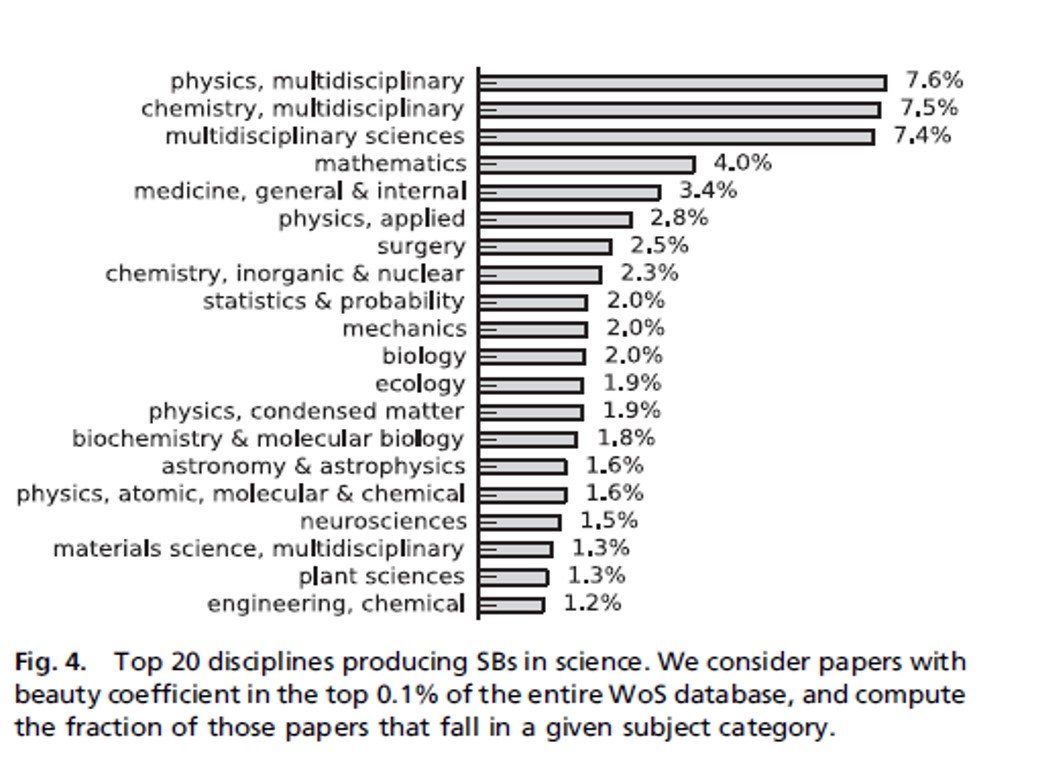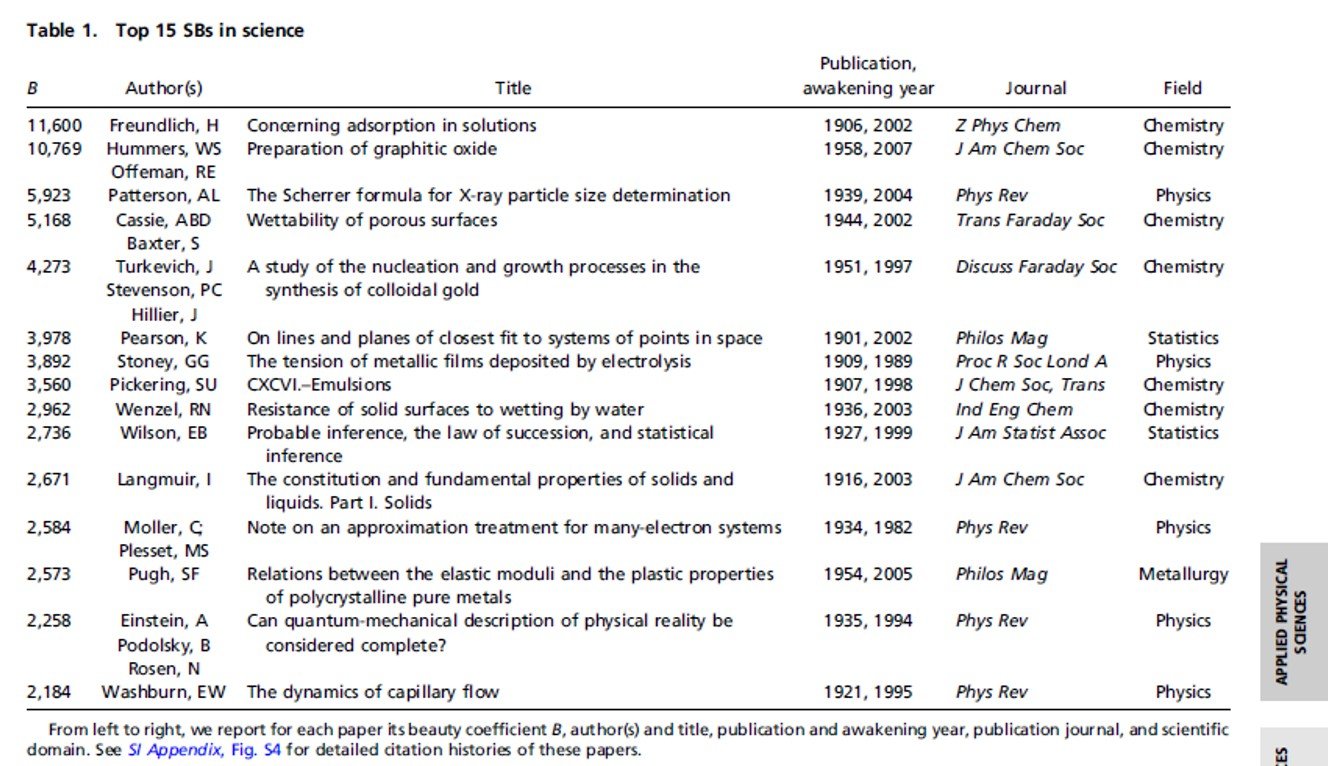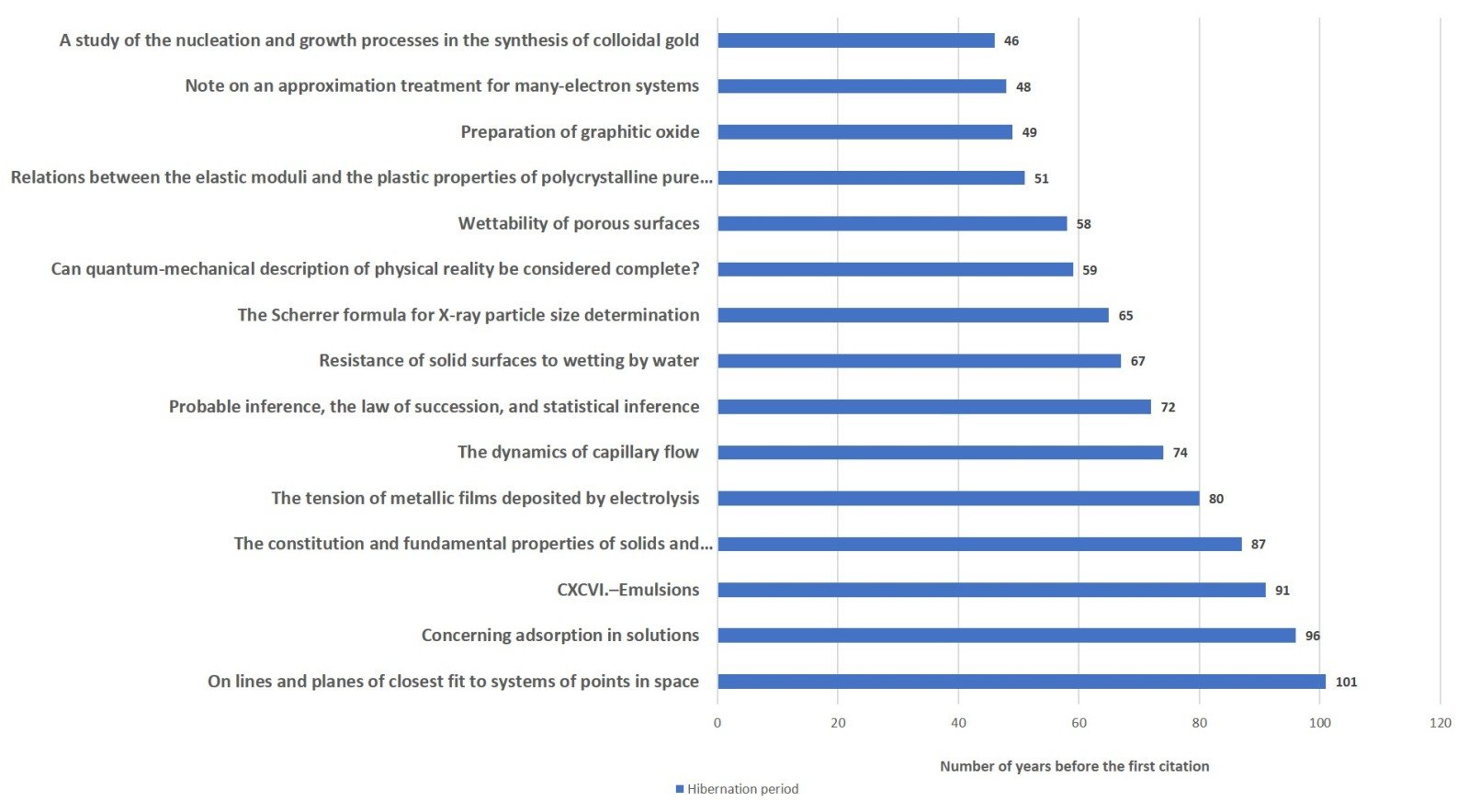Hi steemians! I hope you have not clicked and hoping to see beautiful women in this post. If you are, i am sorry! Anyway, today, i am going to talk about an intriguing topic on sleeping beauties in academia - what are they and what lessons can be learnt from it, even for bloggers.
What is sleeping beauty (SB) in academia?
A sleeping beauty in academia is defined as a journal paper which lies dormant, meaning not having cited at all, and then finally being cited multiple times after many years, which in a case is more than 100 years. In internet world, it is just like someone chanced upon a good quality blog post or article published way past a month and then, decided to spread the post. The post suddenly goes viral - read and shared many times over.
There are researchers investigating this phenomenon. This group of researchers from Center for Complex Networks and Systems Research from Indiana University researched in SB metrics and applied their method on 22 million scientific papers. Over here is some of the summarized results:

From here, it seems that Physics and Chemistry paper were papers with the most potential to hibernate. Reason? I don't know. My gut feel is that Physics and Chemistry are the more fundamental sciences to link to other sciences or applications such as statistics, environmental, ecology, etc.
Below is the screenshot of the top 15 SB paper based on their metrics.

And from the results above, i plotted a bar chart based on their hibernation period.

Now, from the results, trivia question.
Which paper in the world has the longest hibernation period before being cited for the first time?
The answer: Karl Pearson’s paper on “On lines and planes of closest fit to systems of points in space” published in 1901 and cited for the first time in 2002.

Karl Pearson is an English mathematician and biostatistician. This SB paper of his explores the relation between principal component analysis (PCA) and the minimization chi distance. This paper become one of the most applied statistical studies in biology, in particular genome-wide expression studies.
If you are interested, you can retrieve his paper from here.
What are the potential lessons from this?
1. Fundamental research is way too important in science
For people who think that fundamental research waste taxpayers’ money, no no no! I disagree! Just because it has no applications now, it does not mean that it will not find an application in the future. And yes, it can be as far as a century later. And of course to steemit bloggers, just because not many people upvote your content enough, it does not mean that your post is not interesting, you just have not found your audience yet. Continue to post and you will get there.
2. Interdisciplinary research is important for science knowledge and technology advancement
Can never emphasize this enough. Increasingly, we have seen different fields sharing and transferring knowledge which is a really good sign. Because researchers can never know if knowledge from other fields can actually solve and problem in your field. Hence, sometimes, it may be a good idea to cross-read papers in other disciplines. You never know if you may be inspired! And of course, to steemit bloggers, cross-read content from other websites too! If you are blogging in #science or #technology, there are lots of great content at Techcrunch, Livescience or even, Nature. There is also a list of open access journals where you can read many great papers. Read them and find it interesting? Or find a paper fascinating? Share it here and we can discuss! Share your thoughts! Do not agree with what the authors said? Review them here. Open up and discuss!
3. Cite, cite, cite
I must also emphasize this: cite, cite, cite! Research something and want to prove your point? Cite! It will make your piece a more powerful piece and it will also prove that you have done research enough to add weight to your point. It will also help gives credit to the original authors for inspiring your thoughts and starting your interests! And you also made their day in showing that someone appreciates their efforts! Can never look down on citation dynamics!
Last but not least, if you are interesting in reading this phenomenon, you can clink on the following link:-
Defining and identifying Sleeping Beauties in science by Qing Ke, Emilio Ferrara, Filippo Radicchi, and Alessandro Flammini (Open access, of course)
